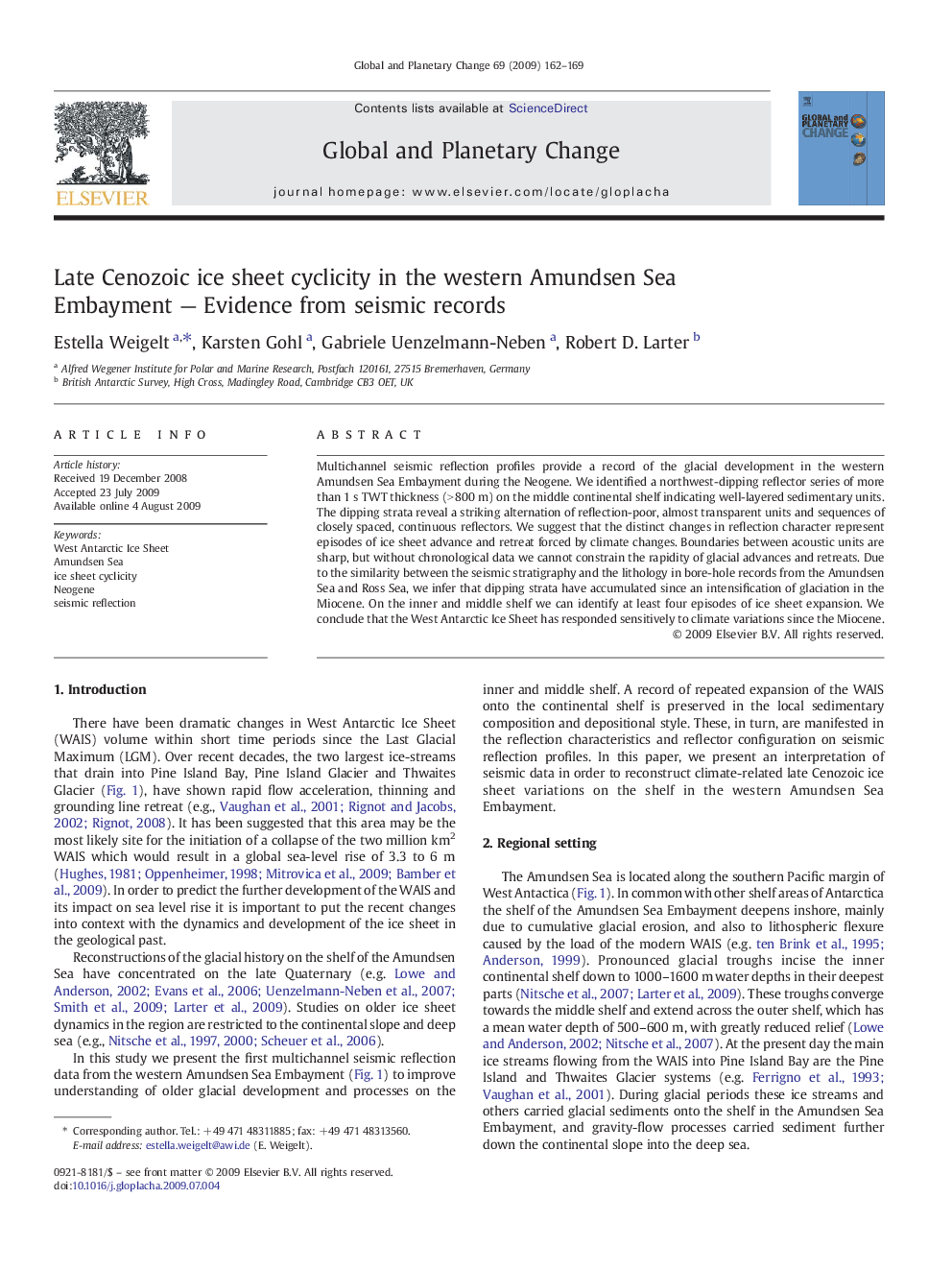| Article ID | Journal | Published Year | Pages | File Type |
|---|---|---|---|---|
| 4464074 | Global and Planetary Change | 2009 | 8 Pages |
Multichannel seismic reflection profiles provide a record of the glacial development in the western Amundsen Sea Embayment during the Neogene. We identified a northwest-dipping reflector series of more than 1 s TWT thickness (> 800 m) on the middle continental shelf indicating well-layered sedimentary units. The dipping strata reveal a striking alternation of reflection-poor, almost transparent units and sequences of closely spaced, continuous reflectors. We suggest that the distinct changes in reflection character represent episodes of ice sheet advance and retreat forced by climate changes. Boundaries between acoustic units are sharp, but without chronological data we cannot constrain the rapidity of glacial advances and retreats. Due to the similarity between the seismic stratigraphy and the lithology in bore-hole records from the Amundsen Sea and Ross Sea, we infer that dipping strata have accumulated since an intensification of glaciation in the Miocene. On the inner and middle shelf we can identify at least four episodes of ice sheet expansion. We conclude that the West Antarctic Ice Sheet has responded sensitively to climate variations since the Miocene.
